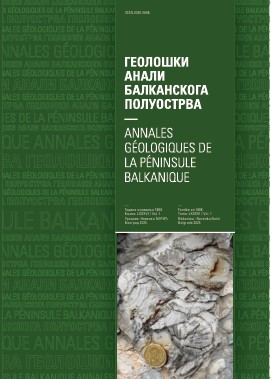Microfacies and biostratigraphy of an Upper Triassic Dachstein limestone fore-reef block in the Jurassic Sirogojno carbonate-clastic Mélange (Zlatibor Mt., SW Serbia)
Abstract
In the late Middle to early Late Jurassic carbonate-clastic Sirogojno Mélange in the Zlatibor Mountain there is one roughly 35 m thick overturned block with an intact Late Triassic fore-reefal Dachstein Limestone succession that was studied here for its biostratigraphic age, faunal content and microfacies characteristics. The succession starts with coarse-grained rudstones followed by meter-sized reefal blocks intercalated in partly layered resedimented grainstones and packstones with abundant reef-building organisms like calcareous sponges, corals and encrusting organisms. Inside this part of the succession open-marine influenced layers are rare. The succession continues with a partly turbiditic sequence and chaotic rudstones, densely packed with reef-derived material like broken reef-building organisms and shallow-water material like gastropods, bivalves and foraminifers. Grainstones with clear open-marine influence (e.g., thin-shelled bivalves, crinoids, conodonts) appear in between those rudstones, in cases lumachelle layers consisting of halobiids were deposited. To the end of the succession some layers show turbiditic bedding with mixed shallow- water and deep-marine grains and organisms, i.e. filaments and crinoids. On base of conodonts, foraminifers, calcareous algae, holothurians and halobiids throughout the whole studied succession, a Middle Norian (Alaunian) to Rhaetian 1, most probably a Late Norian (Sevatian) age can be assigned to this forereefal Dachstein Limestone succession, with a similar sedimentation pattern like Late Triassic Dachstein fore-reef limestone facies, e.g., in the Northern Calcareous Alps or the eastern Southern Alps. The study of this block in the Sirogojno Mélange closes an important gap in knowledge about the extent, facies and stratigraphy of the Dachstein Carbonate Platform evolution in the Dinarides.
Copyright (c) 2021 Geološki anali Balkanskoga poluostrva

This work is licensed under a Creative Commons Attribution 4.0 International License.










